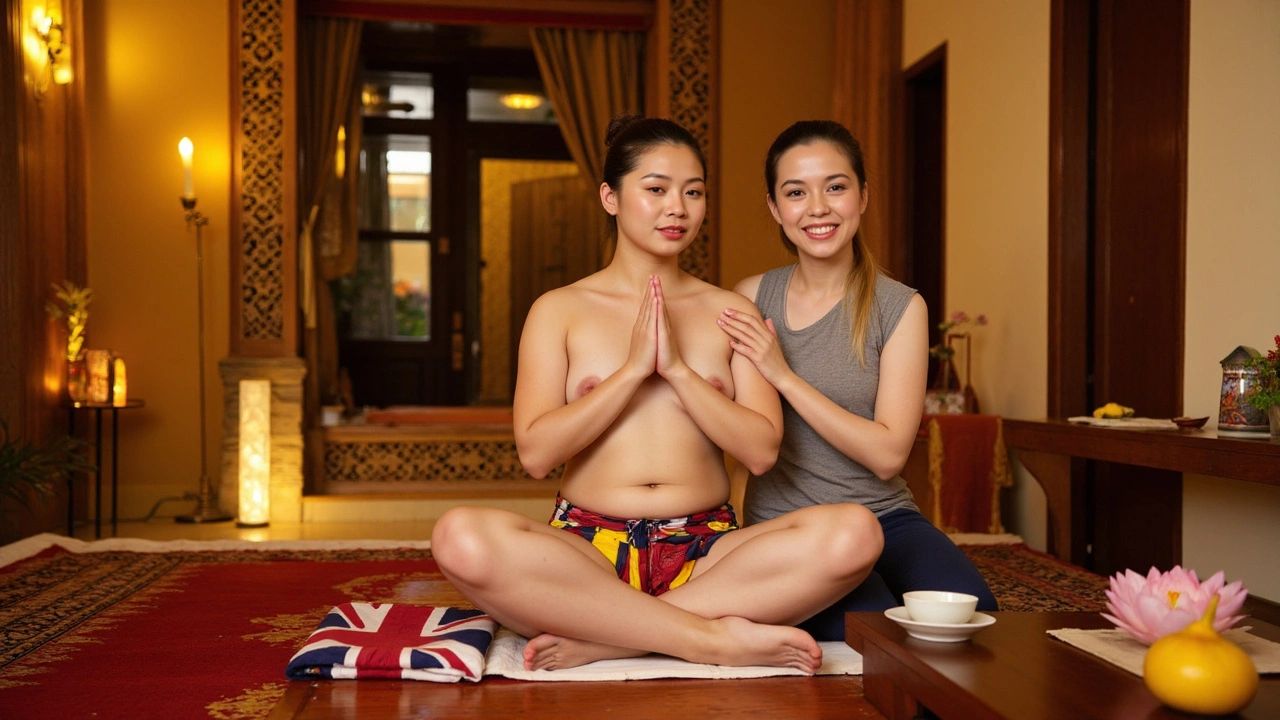Full Body Massage: Boosting Circulation and Heart Health the Natural Way

Not all relaxation techniques are created equal. A full body massage doesn't just feel amazing—it's got some serious perks for your heart and blood flow. Think about this: some studies have seen resting heart rates and blood pressure drop within an hour after a session. That's not magic—it's simple science.
Blood moves through your veins kind of like city traffic. Sometimes it needs a gentle nudge to keep flowing smoothly, especially if you sit at a desk all day or feel stressed out. Massage therapists use their hands to warm up your muscles, loosen tight spots, and pump up your circulation. It's like giving stalled traffic the green light—your cells get more oxygen, and your heart doesn't have to work overtime.
If you're after real results, it pays to know what targets your health goals best. Swedish massage tends to be the go-to for boosting circulation; deep tissue styles dig a little deeper. You don't need to be an athlete or a wellness nut to see the benefits, either. Even folks who just want to sleep better or recover from a busy week can walk away feeling lighter, calmer, and more energized.
- Key Effects of Full Body Massage
- Real-Life Benefits for Circulation and Heart Health
- Types of Massage That Help the Most
- What to Expect and How to Get Started
Key Effects of Full Body Massage
Ever wonder what actually happens in your body during a full body massage? It’s not just about drifting off while someone kneads your back. Here’s what’s really going on inside you:
- Improved Circulation: Gentle pressure and kneading physically push blood through areas where flow might be slow or restricted. This gets more oxygen and nutrients to your cells while helping move waste out more efficiently.
- Lowered Blood Pressure: The calming effects of massage encourage your body to switch from stress mode (fight or flight) to relax mode. That lets your heart rate slow down and your blood pressure drop—sometimes in just a single session.
- Reduced Muscle Tension: Massage targets knots and tight spots that can constrict blood flow. Looser muscles mean less strain on your heart and an easier time getting blood where it needs to go.
- Boosted Lymph Flow: Your lymphatic system is basically your body’s cleanup crew. Massage encourages lymph movement that helps clear out toxins and keeps your immune system humming.
- Enhanced Heart Health: Long-term, regular massage can lead to lower risk factors for heart issues by easing chronic stress and keeping blood flow steady.
Curious how fast your body can react? Check out these real numbers from a small clinical study with folks who got a standard 60-minute Swedish massage:
| Metric | Pre-Session | Post-Session |
|---|---|---|
| Heart Rate (bpm) | 78 | 70 |
| Systolic Blood Pressure | 128 | 120 |
| Diastolic Blood Pressure | 82 | 76 |
All these tiny tweaks in your body systems add up. Over time, regular full body massage can make a real dent in stress and heart risk, even if you only have time once a month. Added bonus? Your mood usually gets a boost, too. There’s a reason people keep coming back for more.
Real-Life Benefits for Circulation and Heart Health
Ever wondered if a full body massage can actually help your heart, not just your mood? Turns out, it’s more than just a feel-good treat. Researchers at the University of Illinois found that people who got weekly massages saw their blood pressure drop, on average, by 7 mmHg after just a month. That’s the kind of result you usually see after a couple of weeks of regular exercise.
One of the biggest perks is better circulation. A good massage gets your blood moving, which means more oxygen and nutrients travel to your muscles and organs. This is especially helpful if you sit around a lot or don’t move much at work. When you’re getting regular massages, you might notice your hands and feet feel warmer because blood is finally reaching your fingers and toes.
There’s more. A healthy heart needs a break from stress. Massages ramp up your relaxation and help slow your heart rate. The American Heart Association mentions that lowering stress and anxiety can shave points off your blood pressure, directly protecting your heart health. And with those hands-on techniques pushing fluid out of squeezed spots, your lymphatic system gets a boost too, so waste and toxins are cleared faster.
- Lower resting heart rate (by up to 10 beats per minute after massage for some folks)
- Reduced blood pressure (some studies show drops of 5-7 mmHg after sessions)
- Boosted circulation to hard-to-reach areas, like legs and feet
- Less swelling and inflammation—especially after sitting all day or post-exercise
| Benefit | What You Might Notice |
|---|---|
| Lower blood pressure | Feeling calmer, fewer headaches |
| Improved circulation | Warmer hands/feet, easier movement |
| Lower heart rate | Less tension, better sleep |
You don’t need a doctor’s note to get these benefits, but if you’ve got a heart condition, it always helps to check in with your doctor first. Still, for most people, a regular full body massage fits right into a healthy routine and helps you feel more energized and balanced each day.

Types of Massage That Help the Most
So, you’re probably thinking, “Which type of full body massage will actually do my heart and circulation a favor?” Let’s keep it simple and focus on the styles experts and therapists swear by for real results.
Swedish massage leads the pack. It’s the classic style, with steady, gentle strokes and some kneading that gets your blood moving without beating you up. The main goal here is relaxation, but don’t underestimate it—Swedish can help drop systolic blood pressure numbers by a few points after just one session, according to reports from the American Massage Therapy Association.
Deep tissue massage is a solid pick if your muscles feel like bricks or you sit hunched over a screen all day. The therapist goes deeper—think slow, focused pressure. Besides loosening knots, it boosts circulation and helps your heart pump more efficiently.
Ever heard of sports massage? Don’t let the name fool you—it’s not just for athletes. Sports massage blends stretches, tapping, and kneading. It’s ideal if you’re working out regularly or just want more mobility in your joints. Studies show it can help recover muscle function faster and improve blood flow to tired areas.
Lymphatic drainage massage is a bit different, but it’s legit for folks dealing with swelling or sluggish immune systems. The movements are gentle and rhythmic, focusing on moving lymph fluid instead of just easing tension. This can take pressure off your heart by helping clear extra fluids and toxins from the body.
- Swedish Massage: Best for overall blood flow and relaxation.
- Deep Tissue Massage: Great for chronic tightness and circulation problems.
- Sports Massage: Helpful for active people and muscle recovery.
- Lymphatic Drainage: Targets swelling and helps your heart by easing fluid buildup.
Want to see how they rank for heart and circulation benefits? Here’s an easy table:
| Massage Type | Best For | Circulation Boost | Heart Health Support |
|---|---|---|---|
| Swedish | General relaxation and stress relief | High | Good |
| Deep Tissue | Chronic pain, desk jobs | Very High | Good |
| Sports | Active people, recovery | High | Good |
| Lymphatic | Swelling, immune support | Moderate | Excellent |
Bottom line? If you’re just starting, Swedish is usually your safest bet. But if you know your body could use more oomph, don’t be shy to ask your therapist about deep tissue or a custom mix. There’s no one-size-fits-all—try what feels best, and your circulation (and heart) will thank you.
What to Expect and How to Get Started
Stepping into your first full body massage session? Here’s what actually happens so you’re not caught off guard. A typical session starts with your massage therapist asking about your health, what areas feel tense, and if you’ve had injuries. They’ll explain the best approach for your needs, especially if you want to target circulation or heart health.
You’ll be asked to get comfortable—usually undressed to your comfort level under a sheet or towel, lying face down first. The room is set up for relaxation: soft lighting, maybe some gentle music, and the table is heated if you want. Don’t stress about awkwardness—this setup is totally normal and keeps you comfortable and covered the whole time.
During the massage, the therapist uses a mix of strokes to warm up muscles and improve blood flow. Swedish massage uses long, flowing strokes, while deep tissue goes after stubborn knots. If you mention heart health or circulation, they might focus extra time on your legs, feet, and back—areas that do a lot of heavy lifting for healthy blood movement.
Wondering how long it takes? Standard sessions last 60 minutes, but you can go for 90 if you want extra time. Hydrate before and after; massages help flush waste products from your muscles, so water speeds up recovery. You might feel a little sore the next day, like after a tough workout, but that’s normal.
Ready to try it? Here’s a simple cheat sheet to get started:
- Find a licensed therapist—check online reviews or ask people you trust.
- Mention any health concerns or medications. Safety first.
- Book your session at a time when you’re not rushed. A relaxed schedule means you actually enjoy it.
- Wear comfy clothes that are easy to change out of and into.
The cost of a full body massage can vary a lot depending on location, experience, and length. In most places, you’re looking at $70 to $120 for an hour. Don’t forget to tip if you’re happy with the service—most therapists rely on that.
| Session Length | Average Price (USD) |
|---|---|
| 60 minutes | $70 - $120 |
| 90 minutes | $110 - $180 |
Most importantly, listen to your body. If anything feels uncomfortable, talk to your therapist—they want you to have the best experience. And if you’re like me, you’ll start looking forward to that hour of peace. Even my dog Baxter seems to know when I’m about to walk in the door all relaxed and calm.



